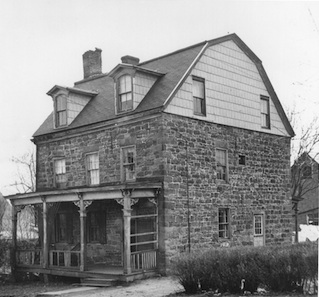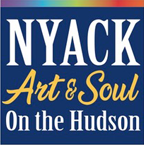Enjoy this self-guided walking tour of Nyack’s historical buildings at your own pace, beginning at any point and stopping for refreshments and shopping as the mood strikes.
Before you arrive:
- Book a room at one of our local hotels.
- Experience Nyack’s guided “Main Street America” tour is an excellent introduction to downtown Nyack. Book here.
- Additionally, the Historical Society of the Nyacks offers guided tours on select Sundays during the summer and fall.Click here for the current schedule.
Historical Nyack Itinerary
Beginning as a sparsely populated agrarian village, Nyack rose to prominence in Rockland County during the Industrial Revolution and developed into the commercial center of the County until the mid 20th Century. Today, although many of the businesses have changed according to the times, the personal service they provide recalls a time before strip malls and large chain stores. As a cultural center, Nyack has both nurtured young artists in their youth and drawn in countless others who have been pulled into its natural beauty and vibrant arts scene. Just the right distance from New York, it has been a suburban haven for commuters and weekenders alike for decades.
We invite you to experience some of Nyack’s historic landmarks on this tour, but remember these are just the tip of the iceberg — even more historic points of interest, shops, and restaurants await the more you explore!
John Green House – at the foot of Main Street

The “Vanilla Factory” – 1 Piermont Avenue
The Vanilla Factory is one of the earliest brick structures in Nyack, built in 1839, and an early example of industry in town. It has been used as a general store, a warehouse, a shoe factory (shoe manufacturing was one of Nyack’s most notable industries in the 19th century) and a flavoring extract processing plant in the 1920s – how it got it’s nickname. Note the large barn style doors on the second and third floors and the overhang that housed the pulley system for loading and unloading large bundles of goods.
The St. George Hotel – 48 Burd Street

Couch Court – 46 South Broadway

The Brickhouse Restaurant (formerly the Tappan Zee Playhouse) – 20 South Broadway

Main Street and Broadway intersection, southeastern corner
The development of this section of town corresponds with the arrival of the railroad — it brought both more residents and businesses into Nyack. In 1870, Abraham Merrit built a store on the corner of Main Street and Broadway. He had a successful dry goods store that evolved into a department store. Merrit attracted customers with a free scale to weigh themselves. This block is a real “time machine” – the street level stores have changed, but if you look up, they look almost the same as they did a century ago.
Edward Hopper House Art Center – 82 North Broadway

Main Street heading west
This section of town was developed later, mostly from the 1890s onwards, with many family run businesses and family owned buildings. These were typically built independently, and often to the family’s liking. Look for the family names on the buildings. A typical family run business: the basement had the production area, be it small factory or kitchen. At the street level was the family shop, and the family typically lived on the floors above. In times before supermarkets and shopping malls, Nyack often sported several bakeries, butcher shops, drug stores simultaneously. Main Street now boasts a mix of eclectic retail stores, varied dining options, and the best nightlife in Rockland County.
Performing Arts Center & Urban Renewal – 125 Main Street
This large concrete building was part of Nyack’s urban renewal in the late 1960s and 1970s. You’ll notice it doesn’t really fit with the rest of the block. Nyack was looking to revitalize many sections of town as it was gradually losing importance as a commercial center of Rockland County upon the advent of malls and other shopping centers. Yes, urban renewal removed some buildings that were eyesores in town, but, many people felt the African-American community was unfairly targeted for eviction in the process. Now in retrospect, the community is much more careful in implementing drastic changes, and more likely to save or re-purpose older buildings. Today the Nyack Farmer’s market gathers here on Thursdays and Saturdays, April to November.
Elmwood Playhouse – 10 Park Street

